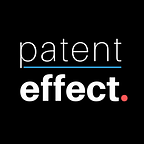Deep Learning Gains Momentum in Healthcare
We have launched Patent Effect as a way of understanding development in technology through analysis of patent data trends. Exploring patent data will help us discover differing use cases of technology. We have picked healthcare informatics: an area that produces large volumes of data and observed patent activity in deep learning keywords.
According to International Data Corporation Health Care Data is expected to grow to 2314 Exabytes (It was calculated 153 exabytes in 2013) According to Stanford Medicine Health Trends Report published in 2017 Medical Research will be influenced by data collected from EMRs , Consumer Level Genetic Data and Wearables Data. In fact Chan Zuckerberg Foundation launched in 2015 provides data analysis tools to researchers in curing, managing and preventing diseases.
Deep Learning is an unsupervised, generative, fast learning algorithm that can classify/predict a value from a dataset or repair a corrupt data. They are used to effectively analyse large sets of data.
I have narrowed down our search to CPC code G16H to review applications on Healthcare Informatics. Publications with deep learning keywords have increased to 32 filings in 2017 in China. Existing publications in China are mostly composed of MNCs.
In Unites States G16H activity is higher. Publications have reached 263 filings in 2016 in the US patent system clearly an indication of focus of interest in deep learning in the field of health informatics. (CPC Classes included are G16H50/50, G16H40/63, G16H50/30, G16H50/20, G16H10/60, G16H10/20, G16H15/00) High patent activity is observed in companies such as Bodymedia a fitness wearable device, Ubiome a micro biome analysis company and Heartflow which analysis your CT scan that creates a 3D model of your coronary artery to analyse the impact of blockages on blood flow. These three examples shows three use cases of deep learning can thrive : data collected from wearables, data collected from biotechnology kits and data collected from medical imaging.
Startups that are interested in developing artificial intelligence tools can collaborate with wearables, biotechnology and EMR companies to analyse and build tools that can help diagnosis and prediction. Our initial search also shows that deep learning applications in healthcare informatics in China is low compared to US. Yet China has taken important steps since 2016 to make use of big data in Healthcare. China Cohort Consurtium, development of regional health data centres and opening of national administrative database for academic use will create more activity in healthcare data and deep learning applications.
Access to big data is the most important step in developing AI tools. There are paths to accessing big data. Public services with the highest volume of big data can take steps to create audited access for research and development purposes. Second option is to support more startups that collect and analyse health data such as in fields of wearables, EMRs and bioinformatics.
In our next blog post we will review patent filings in China and US for the keyword neural networks: a class of machine learning algorithms. They have more presence in China due to its larger scope compared to “deep learning” keyword.
Please feel free to recommend us an area of focus and region to search and compare patent trends.
Originally published at blog.patenteffect.com on May 3, 2018.
